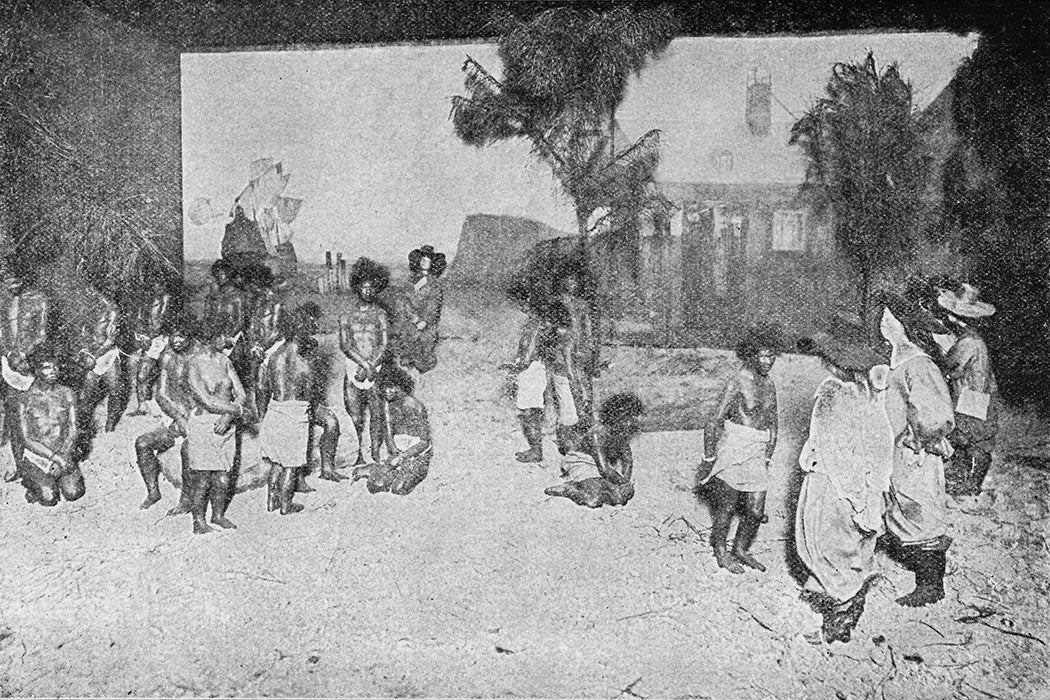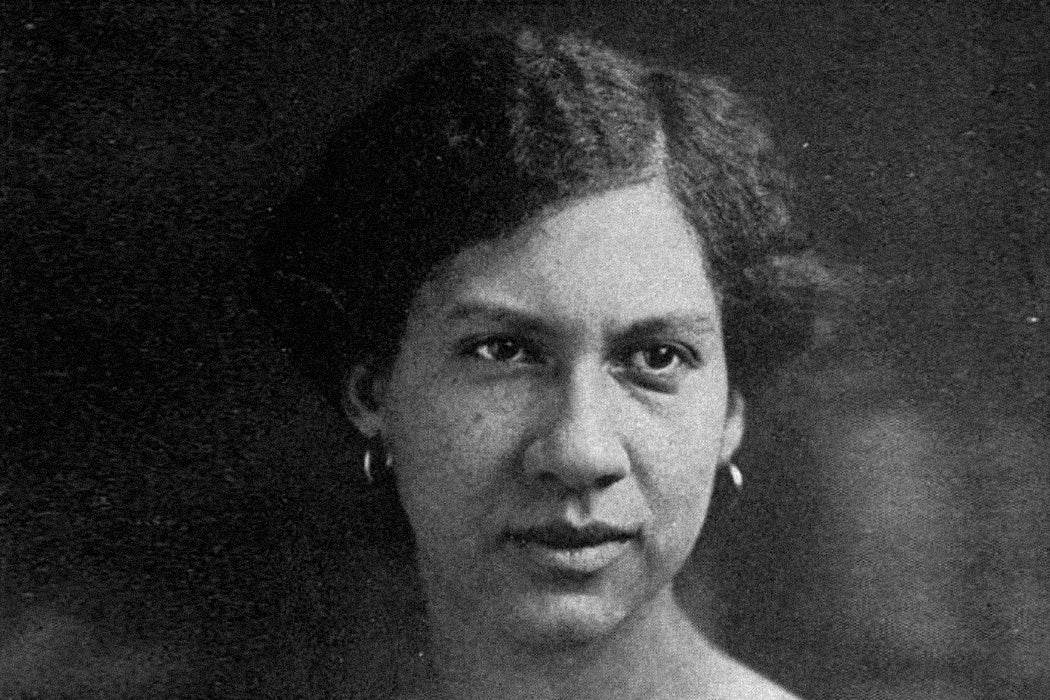Shifts in historical narratives often come down to whose stories are told and who gets to tell them. As historian W. Fitzhugh Brundage explains, that was very much the case when sculptor Meta Warrick challenged the depiction of human progress on display at the 1907 Jamestown Exhibition.
In the late nineteenth and early twentieth centuries, Brundage writes, world’s fairs and expositions were wildly popular. They put new innovations and ideas on display, celebrating the advance of technology and human progress. One common feature of the fairs was exhibits purporting to reproduce the villages of exotic tribes. This helped to depict a kind of universal progress of humanity, contrasting Africans or other “primitive” people with “modern” white Europeans and Americans. Late nineteenth-century fairs in numerous U.S. cities featured glorified depictions of plantations, with Black people hired to portray content, ignorant enslaved people.
Meta Warrick was born in 1877 into an elite Black family in Philadelphia. She attended integrated, progressive schools. In 1899, she moved to Paris to study sculpting, gravitating toward creative renderings of mythical and biblical subjects. At a Paris exhibition in 1900, she met W.E.B. Du Bois, who urged her to “make a specialty of Negro types,” an idea she initially resisted.
But, Brundage writes, her feelings were changing. She was experiencing racism in her own life, in the form of art patrons who didn’t take her work seriously, and observing the peak of lynchings in the U.S. When she got the chance to create the diorama for the 1907 Jamestown fair, she jumped at it.

Organized by white Virginia elites, Brundage writes, the Jamestown Exhibition was, for the most part, “an unabashed celebration of Anglo-Saxonism.” For example, North Carolina had an exhibit identifying the state as the birthplace of Virginia Dare, the first “infant child of pure Caucasian blood” born in North America.
And yet Warrick and other Black reformers saw an opportunity. Given the cultural power of the fairs, they wanted the chance to depict the progress and success of Black people in America, before both Black and white audiences.
Warwick’s tableaus began with “Landing of First Twenty Slaves at Jamestown,” a scene set in 1619 with twenty-four two-foot-high plaster figures of shackled, nearly nude Africans. Another thirteen dioramas told a story of survival and uplift, with the final dioramas depicting Black professionals at work and in comfortable domestic scenes.
Weekly Newsletter
In some ways Warrick’s exhibit followed a typical exhibition-friendly story of human progress. But instead of depicting this as racial evolution culminating in whiteness, she showed African Americans raising themselves to the heights of civilization.
Warrick’s depictions of contemporary Black life were idealized, showing peaceful bourgeois lives that were impossible for the vast majority in a racist and segregated country. And, Brundage notes, her narrative accepted the notion that people from Africa needed to adopt white norms to achieve civilization. But in the context of the prevailing ideology at international exhibitions, she created a new vision of what human progress could look like.







